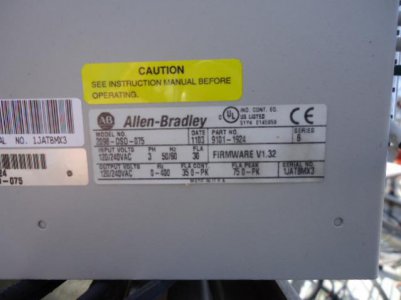- Joined
- Nov 3, 2013
- Messages
- 405
I bought an AB Ultra 3000 multi-axis servomotor controller which is essentially a fancy VFD from Charley Davidson.
The issue I have is how to feed it three phase power it likes. The manufacturer of the RPC I have Jim at Phase-Craft thinks that the AB won't like the manufactured three phase from an RPC because there will be two 120v legs from the line input while the manufactured leg will be 220 or so. I don't understand this but Jim is a pretty smart guy who makes a great product.
The AB I'm getting requires 120-240 three phase.
How do I configure this to work with an RPC?
Here's a picture of the data plate on the AB U3000


The issue I have is how to feed it three phase power it likes. The manufacturer of the RPC I have Jim at Phase-Craft thinks that the AB won't like the manufactured three phase from an RPC because there will be two 120v legs from the line input while the manufactured leg will be 220 or so. I don't understand this but Jim is a pretty smart guy who makes a great product.
The AB I'm getting requires 120-240 three phase.
How do I configure this to work with an RPC?
Here's a picture of the data plate on the AB U3000


